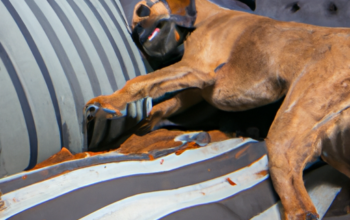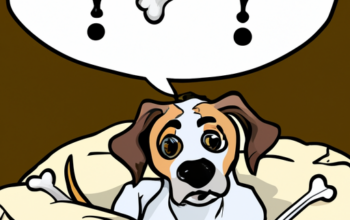As a caregiver, understanding your dog’s health issues is crucial. One such problem that can cause discomfort and distress in your furry friend is the filling of their anal glands. But, what exactly causes this, and how can you help manage it? Let’s dive in to unravel this mystery.
Understanding Anal Glands
Anal glands, also known as anal sacs, are small pouches located on either side of your dog’s rectum. They secrete a smelly fluid that dogs use to mark their territory. However, sometimes these glands can become filled or impacted, leading to discomfort, pain, and even infection in your furry friend.
- Normal Functioning: Under normal circumstances, these glands empty out when your dog defecates.
- Impaction: Sometimes, the glands do not empty out properly, leading to a build-up of the secretions, which can harden and cause impaction.
Causes of Anal Gland Filling
Several factors can contribute to your dog’s anal glands filling up. Here’s a rundown of the most common causes:
- Soft Stools: If your dog’s stools are too soft, they may not apply enough pressure to the glands during defecation, leading to incomplete emptying.
- Obesity: Overweight dogs are more prone to this issue due to the extra fat in the anal area, which can obstruct the gland ducts.
- Allergies: Allergies can lead to inflammation of the anal area, making it harder for the glands to empty.
- Infections and Abscesses: Bacterial infections can cause the glands to produce more secretions, leading to filling.
Symptoms to Look Out For
Your dog can’t tell you when they’re experiencing discomfort, so it’s important to keep an eye out for these signs:
- Scooting or dragging their rear on the ground
- Excessive licking or chewing at the anal area
- Difficulty sitting or discomfort when sitting
- Swelling or redness around the anal area
How to Manage and Prevent Filled Anal Glands
Prevention is always better than cure. Here are some strategies to help manage and prevent filled anal glands in your dog:
- Dietary Changes: A diet high in fiber can help firm up your dog’s stools, facilitating the emptying of the glands.
- Regular Exercise: Regular physical activity can help maintain a healthy weight and promote regular bowel movements.
- Regular Vet Check-ups: Regular vet visits can help detect and treat any issues early on.
FAQ
Below are some frequently asked questions to help you understand more about this condition:
Q: Are certain breeds more prone to filled anal glands?
A: Yes, small dog breeds, like Chihuahuas and Toy Poodles, are more prone to this condition.
Q: Can I empty my dog’s anal glands at home?
A: While it’s possible, it’s best to let a vet or professional groomer do this due to the risk of injury or infection.
Q: How often should a dog’s anal glands be emptied?
A: The frequency varies depending on the dog. Some dogs may need it monthly, while others may never need it.
Q: Can filled anal glands be a sign of a more serious problem?
A: In some cases, yes. Chronic issues with anal glands can indicate underlying conditions like allergies or infections.
Understanding the causes and prevention strategies for filled anal glands can help keep your furry friend comfortable and happy. Remember, when in doubt, always consult with a vet.


